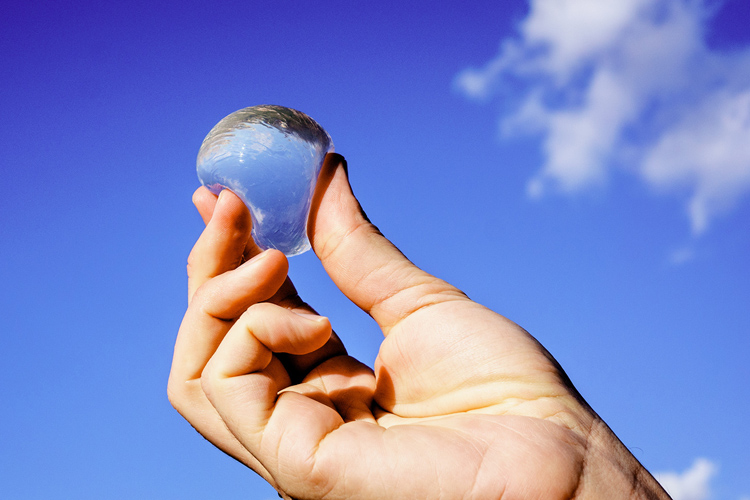Going for a day at the beach? Need water to stay hydrated? Learn how to say "no" to plastic containers. Cook your own edible water bottles.
Is there water you can eat? Yes, there is.
It might sound strange, but it is possible to create a gelatinous fiber that keeps the water "solid" and ready to be consumed.
These natural water bottles can burst quite easily. However, it is possible to produce thicker skins for industrial purposes.
The good news is that they're cheap, biodegradable, and an excellent teaching tool for schools.
Materials
It's quite easy to produce edible water blobs. Here's what you'll need:
- Curved spoon;
- Hand mixer;
- 1 cup of drinking water;
- Bowl with 4 cups of water;
- Bowl with water;
- 1 gram of sodium alginate;
- 5 grams of calcium lactate;
Edible Water Bottles 101
Ready to make your first edible water bottles?
- Pour the sodium alginate into the cup of drinking water;
- Dissolve both ingredients with the hand mixer;
- Set the mixture aside for 15 minutes;
- Add the calcium lactate to the 4 cups of water;
- Mix well;
- Scoop up some of your sodium alginate solution and plop it into the calcium lactate solution;
- Repeat the process as many times as you want;
- Gently stir the solution for three minutes;
- Lift the water blobs with a large spoon and put them in a bowl of water;
- Your edible water bottles are ready;
Discover a few things you didn't know about water, and learn how to save water in your daily life.
